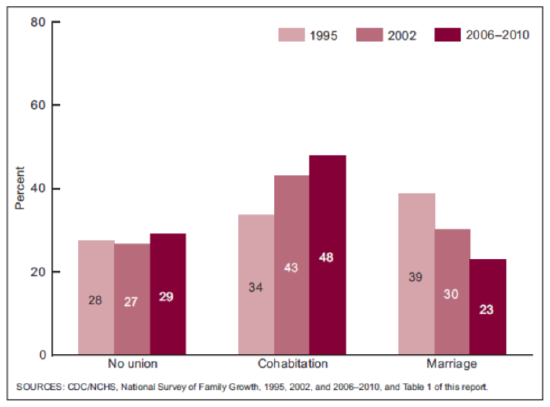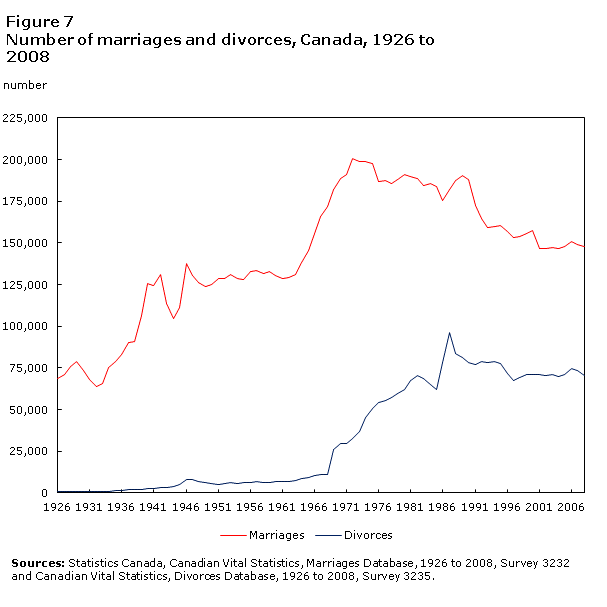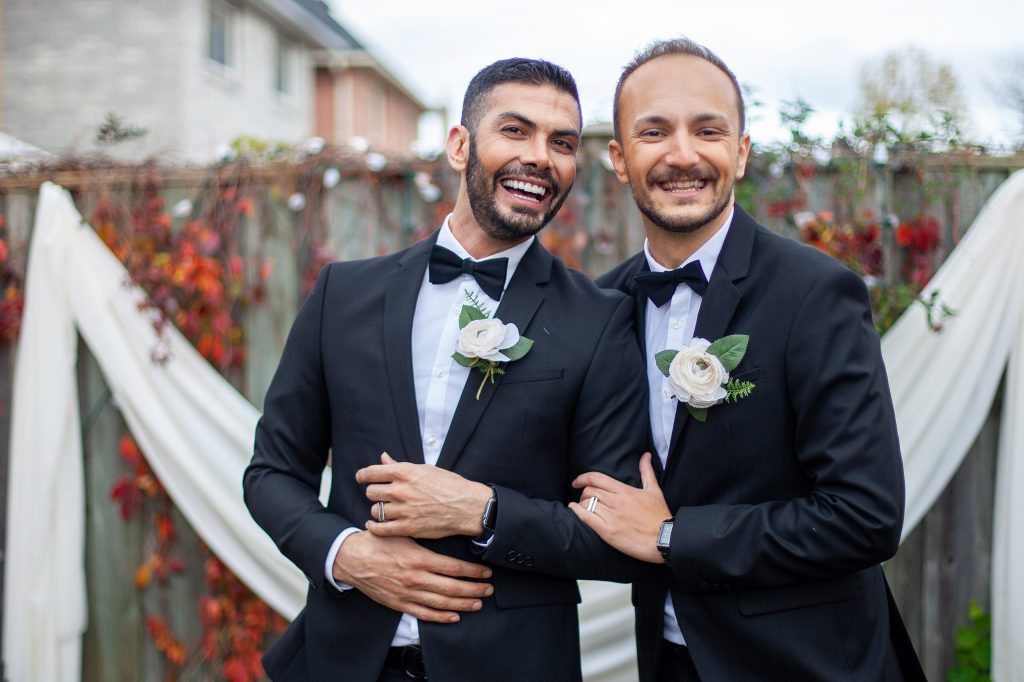117 Adult Lifestyles
Martha Lally; Suzanne Valentine-French; and Dinesh Ramoo
Singlehood: Being single is the most common lifestyle for people in their early twenties, and there has been an increase in the number of adults staying single. In 1960, only about 1 in 10 adults age twenty-five or older had never been married; in 2012 that had risen to 1 in 5 (Wang and Parker, 2014). While just over half (53 percent) of unmarried adults say they would eventually like to get married, 32 percent are not sure, and 13 percent do not want to get married. It is projected that by the time current young adults reach their mid-forties and fifties, almost 25 percent of them may not have married. The US is not the only country to see a rise in the number of single adults.
| Have not met the right person | 30 percent |
| Do not have financial stability | 27 percent |
| Not ready to settle down | 22 percent |
| Too young to marry | 22 percent |
Table 7.5 lists some of the reasons young adults give for staying single (Wang and Parker, 2014). In addition, adults are marrying later in life, cohabitating, and raising children outside of wedlock in greater numbers than in previous generations. Young adults also have other priorities, such as education and establishing their careers. This may be reflected by changes in attitudes about the importance of marriage. In a recent Pew Research survey of Americans, respondents were asked to indicate which of the following statements came closer to their own views:
- “Society is better off if people make marriage and having children a priority”
- “Society is just as well off if people have priorities other than marriage and children”
Slightly more adults endorsed the second statement (50 percent) than those who chose the first (46 percent), with the remainder either selecting neither, both equally, or not responding (Wang and Parker, 2014). Young adults aged eighteen to twenty-nine were more likely to endorse this view than adults aged thirty to forty-nine (67 percent and 53 percent respectively). In contrast, those aged fifty or older were more likely to endorse the first statement (53 percent).
Hooking up: United States demographic changes have significantly affected the romantic relationships among emerging and early adults. As previously described, the age for puberty has declined, while the times for one’s first marriage and first child have been pushed to older ages. This results in a “historically unprecedented time gap where young adults are physiologically able to reproduce, but not psychologically or socially ready to settle down and begin a family and child rearing” (Garcia, Reiber, Massey, and Merriwether, 2012, p. 172). Consequently, according to Bogle (2007, 2008), traditional forms of dating have shifted to more casual hookups that involve uncommitted sexual encounters.

Even though most research on hooking up involves college students, 70 percent of sexually active 12- to 21-year-olds reported having had uncommitted sex during the past year (Grello, Welsh, Harper, and Dickson, 2003). Additionally, Manning, Giordano and Longmore (2006) found that 61 percent of sexually active seventh, ninth, and eleventh graders reported being involved in a sexual encounter outside of a dating relationship.
Friends with BenefitsHookups are different than those relationships that involve continued mutual exchange. These relationships are often referred to as friends with benefits (FWB) or “booty calls.” These relationships involve friends having casual sex without commitment. Hookups do not include a friendship relationship. Bisson and Levine (2009) found that 60 percent of 125 undergraduates reported a FWB relationship. The concern with FWB is that one partner may feel more romantically invested than the other (Garcia et al., 2012). |
Hooking up and gender differences: When asked about their motivation for hooking up, both men and women indicated physical gratification, emotional gratification, and a desire to initiate a romantic relationship as reasons (Garcia and Reiber, 2008). Although men and women are more similar than different in their sexual behaviours, a consistent finding among the research is that men demonstrate a greater permissiveness to casual sex (Oliver and Hyde, 1993). In another study involving 16,288 individuals across fifty-two nations, men reported a greater desire of sexual partner variety than women, regardless of relationship status or sexual orientation (Schmitt et al., 2003). This difference can be attributed to gender-role expectations for both men and women regarding sexual promiscuity. Additionally, the risks of sexual behaviour are higher for women and include unplanned pregnancy, increased sexually transmitted diseases, and susceptibility to sexual violence (Garcia et al., 2012).
Although hooking up relationships have become normalized for emerging adults, some research indicates that the majority of both sexes would prefer a more traditional romantic relationship (Garcia et al., 2012). Additionally, Owen and Fincham (2011) surveyed five hundred college students with experience with hookups, and 65 percent of women and 45 percent of men reported that they hoped their hookup encounter would turn into a committed relationship. Further, 51 percent of women and 42 percent of men reported that they tried to discuss the possibility of starting a relationship with their hookup partner. Casual sex has also been reported to be the norm among gay men, but they too indicate a desire for romantic and companionate relationships (Clarke and Nichols, 1972).
Emotional consequences of hooking up: Concerns regarding hookup behaviour certainly are evident in the research literature. One significant finding is the high comorbidity of hooking up and substance use. Those engaging in non-monogamous sex are more likely to have used marijuana, cocaine, and alcohol, and the overall risks of sexual activity are drastically increased with the addition of alcohol and drugs (Garcia et al., 2012). Regret has also been expressed, and those who had the most regret after hooking up also had more symptoms of depression (Welsh, Grello, and Harper, 2006). Hookups were also found to lower self-esteem, increase guilt, and foster feelings of using someone or feeling used. Women displayed more negative reactions than men, and this may be due to women identifying more emotional involvement in sexual encounters than men.
Hooking up can best be explained by a biological, psychological, and social perspective. Research indicates that emerging adults feel it is necessary to engage in hookup behaviour as part of the sexual script depicted in the culture and media. Additionally, they desire sexual gratification. However, they also want a more committed romantic relationship and may feel regret with uncommitted sex.
Online dating: The ways people are finding love has changed with the advent of the Internet. In a poll, 49 percent of American adults reported that either they or someone they knew had dated a person they met online (Madden and Lenhart, 2006). Online dating has also increased dramatically among those aged eighteen to twenty-four. Today, 1 in 5 emerging adults report using a mobile dating app, while in 2013 only 5 percent did, and 27 percent report having used online dating, almost triple the rate in 2013 (Smith and Anderson, 2016). As Finkel, Burnette, and Scissors (2007) found, social networking sites and the Internet perform three important tasks. Specifically, sites provide individuals with access to a database of other individuals who are interested in meeting someone. Dating sites generally reduce issues of proximity, as individuals do not have to be close in proximity to meet. Also, they provide a medium in which individuals can communicate with others. Finally, some Internet dating websites advertise special matching strategies, based on factors such as personality, hobbies, and interests, to identify the “perfect match” for people looking for love online. Social networking sites have provided opportunities for meeting others you would not have normally met. However, social networking sites can also be forums for unsuspecting people to be duped, as the person may not be who they say they are.
Online communication differs from face-to-face interaction in a number of ways. In face-to-face meetings, people have many cues upon which to base their first impressions. A person’s looks, voice, mannerisms, dress, scent, and surroundings all provide information in face-to-face meetings, but in computer-mediated meetings, written messages are the only cues provided. Fantasy is used to conjure up images of voice, physical appearance, mannerisms, and so forth. The anonymity of online involvement makes it easier to become intimate without fear of interdependence. When online, people tend to disclose more intimate details about themselves more quickly. A shy person can open up without worrying about whether or not the partner is frowning or looking away. Someone who has been abused may feel safer in virtual relationships. It is easier to tell one’s secrets because there is little fear of loss. One can find a virtual partner who is warm, accepting, and undemanding (Gwinnell, 1998), and exchanges can be focused more on emotional attraction than physical appearance.
To evaluate what individuals are looking for online, Menkin, Robles, Wiley and Gonzaga (2015) reviewed data from an eHarmony.com relationship questionnaire completed by a cross-sectional representation of 5,434 new users. Their results indicated that users consistently valued communication and characteristics such as personality and kindness over sexual attraction. Women valued communication over sexual attraction even more when compared to men, and older users rated sexual attraction as less important than younger users. Alterovitz and Mendelsohn (2011) analyzed six hundred Internet personal ads across the lifespan, and found that men sought physical attractiveness and offered status-related information more than women, while women were more selective than men and sought status more than men. These findings were consistent with previous research on gender differences regarding the importance of physical/sexual attraction.
Cohabitation: In American society, as well as in a number of other cultures, cohabitation has become increasingly commonplace.

As shown in Figure 7.24, in 1995, 34 percent of women cohabitated as the first union with their partner, and by 2010 almost half of all women did (Copen, Daniels, and Mosher, 2013). Copen and colleagues also found that from 1995 to 2010 the median length of the cohabitation relationship increased regardless of whether the relationship resulted in marriage, remained intact, or had since dissolved. In 1995 the median length of the cohabitation relationship was thirteen months, whereas it was twenty-two months by 2010. Cohabitation for all racial/ethnic groups, except for Asian women, increased between 1995 and 2010 (Table 7.6). Forty percent of the cohabitations transitioned into marriage within three years, 32 percent were still cohabitating, and 27 percent of cohabitating relationships had dissolved within the three years.
| Racial/Ethnic Group | 1995 | 2006–2010 |
|---|---|---|
| Hispanic | 30 percent | 47 percent |
| White | 35 percent | 49 percent |
| Black | 35 percent | 49 percent |
| Asian | 22 percent | 22 percent |
Three explanations have been given for the rise of cohabitation in Western cultures. The first notes that the increase in individualism and secularism, and the resulting decline in religious observance, has led to greater acceptance and adoption of cohabitation (Lesthaeghe and Surkyn, 1988). Moreover, the more people view cohabitating couples, the more normal this relationship becomes, and the more couples who will then cohabitate. Thus, cohabitation is both a cause and the effect of greater cohabitation.
A second explanation focuses on the economic changes. The growth of industry and the modernization of many cultures has improved women’s social status, leading to greater gender equality and sexual freedom, with marriage no longer being the only long-term relationship option (Bumpass, 1990). A final explanation suggests that the change in employment requirements, with many jobs now requiring more advanced education, has led to a competition between marriage and pursuing post-secondary education (Yu and Xie, 2015). This might account for the increase in the age of first marriage in many nations. Taken together, the greater acceptance of premarital sex, and the economic and educational changes would lead to a transition in relationships. Overall, cohabitation may become a step in the courtship process or may, for some, replace marriage altogether.
Similar increases in cohabitation have also occurred in other industrialized countries. For example, rates are high in Great Britain, Australia, Sweden, Denmark, and Finland. In fact, more children in Sweden are born to cohabiting couples than to married couples. The lowest rates of cohabitation in industrialized countries are in Ireland, Italy, and Japan (Benokraitis, 2005).
Cohabitation in the Philippines and China: Similar to other nations, young people in the Philippines are more likely to delay marriage, to cohabitate, and to engage in premarital sex as compared to previous generations (Williams, Kabamalan, and Ogena, 2007). Despite these changes, many young people are still not in favour of these practices. Moreover, there is still a persistence of traditional gender norms as there are stark differences in the acceptance of sexual behaviour out of wedlock for men and women in Philippine society. Young men are given greater freedom. In China, young adults are cohabitating in higher numbers than in the past (Yu and Xie, 2015). Unlike many Western cultures, in China adults with higher rather than lower levels of education are more likely to cohabitate. Yu and Xie suggest this may be due to seeing cohabitation as being a more “innovative” behaviour and that those who are more highly educated may have had more exposure to Western culture.
Marriage worldwide: Cohen (2013) reviewed data assessing most of the world’s countries and found that marriage has declined universally during the last several decades. This decline has occurred in both poor and rich countries, however, the countries with the biggest drops in marriage were mostly rich: France, Italy, Germany, Japan and the US. Cohen states that the decline is not only due to individuals delaying marriage, but also because of high rates of non-marital cohabitation. Delayed or reduced marriage is associated with higher income and lower fertility rates that are reflected worldwide.

Marriage in Canada: The number of marriages in Canada has fluctuated over the past century. This was often influenced by historical circumstances. The 1930s saw a decrease in marriage during the Great Depression, while 1939 saw an increase in marriage when marital status affected the likelihood of conscription during the Second Word War. The marriage rate was relatively stable during the 1960s and 1970s, peaking in 1972. The year 2000 saw a slight uptick in marriages possibly due to people wanting to marry in the new millennium. However, there has been an overall downward trend in marriage rates in Canada.
Marriage in the United States: In 1960, 72 percent of adults age eighteen or older were married; in 2010 this had dropped to barely half (Wang and Taylor, 2011). At the same time, the age of first marriage has been increasing for both men and women. In 1960, the average age for first marriage was 20 for women and 23 for men. By 2010 this had increased to 26.5 for women and nearly 29 for men. Many of the explanations for increases in singlehood and cohabitation previously given can also account for the drop and delay in marriage.

Same-sex marriage: In June 26, 2015, the United States Supreme Court ruled that the Constitution guarantees same-sex marriage. The decision indicated that limiting marriage to only heterosexual couples violated the fourteenth amendment’s guarantee of equal protection under the law. This ruling occurred eleven years after same-sex marriage was first made legal in Massachusetts, and at the time of the Supreme Court decision, thirty-six states and the District of Columbia had legalized same-sex marriage. Worldwide, thirty-two countries currently have national laws allowing gays and lesbians to marry (Pew Research Center, 2019). As can be seen in Table 7.7, these countries are located mostly in Europe and the Americas.
| Argentina (2010) | Costa Rica (2020) | Greenland (2015) | New Zealand (2013) | Sweden (2009) |
| Australia (2017) | Denmark (2012) | Iceland (2010) | Northern Ireland (2019) | Taiwan (2019) |
| Austria (2019) | Ecuador (2019) | Ireland (2015) | Norway (2008) | United States (2015) |
| Belgium (2003) | England/Wales (2013) | Luxembourg (2014) | Portugal (2010) | Uruguay (2013) |
| Brazil (2013) | Finland (2015) | Malta (2017) | Scotland (2014) | |
| Canada (2005) | France (2015) | Mexico (2022) | South Africa (2006) | |
| Columbia (2016) | Germany (2017) | The Netherlands (2000) | Spain (2005) |
Cultural influences on marriage: Many cultures have both explicit and unstated rules that specify who is an appropriate mate. Consequently, mate selection is not completely left to the individual. Rules of endogamy indicate the groups we should marry within and those we should not marry within (Witt, 2009). For example, many cultures specify that people marry within their own race, social class, age group, or religion. Endogamy reinforces the cohesiveness of the group. Additionally, these rules encourage homogamy or marriage between people who share social characteristics. The majority of marriages in the US are homogamous with respect to race, social class, age, and, to a lesser extent, religion. Homogamy is also seen in couples with similar personalities and interests.
Arranged marriages and elopement: Historically, marriage was not a personal choice, but one made by one’s family. Arranged marriages often ensured proper transference of a family’s wealth and the support of ethnic and religious customs. Such marriages were a marriage of families rather than of individuals. In Western Europe, starting in the eighteenth century the notion of personal choice in a marital partner slowly became the norm. Arranged marriages were seen as “traditional” and marriages based on love were “modern.” Many of these early love marriages were obtained by eloping (Thornton, 2005).
Around the world, more and more young couples are choosing their partners, even in nations where arranged marriages are still the norm, such as India and Pakistan. Desai and Andrist (2010) found that only 5 percent of the women they surveyed, aged twenty-five to forty-nine, had a primary role in choosing their partner. Only 22 percent knew their partner for more than one month before they were married. However, the younger cohort of women was more likely to have been consulted by their families before their partner was chosen than were the older cohort, suggesting that family views are changing about personal choice. Allendorf (2013) reports that this 5 percent figure may also underestimate young people’s choice, as only women were surveyed. Many families in India are increasingly allowing sons veto power over the parents’ choice of his future spouse, and some families give daughters the same say.
Marital arrangements in India: As the number of arranged marriages in India is declining, elopement is increasing. Allendorf’s (2013) study of a rural village in India describes the elopement process. In many cases the woman leaves her family home and goes to the man’s home, where she stays with him and his parents. After a few days, a member of his family will inform her family of her whereabouts, and gain consent for the marriage. In other cases where the couple anticipate some degree of opposition to the union, the couple may run away without the knowledge of either family, often going to a relative of the man. After a few days, the couple comes back to the home of his parents, where at that point consent is sought from both families. Although in some cases families may sever all ties with their child or encourage him or her to abandon the relationship, typically, they agree to the union as the couple have spent time together overnight. Once consent has been given, the couple lives with the man’s family and are considered married. A more formal ceremony takes place a few weeks or months later.
Arranged marriages are less common in the more urban regions of India than they are outside of the cities. In rural regions, often the family farm is the young person’s only means of employment. Thus, going against family choices may carry bigger consequences. Young people who live in urban centres have more employment options. As a result, they are often less economically dependent on their families, and may feel freer to make their own choices. Thornton (2005) suggests these changes are also being driven by mass media, international travel, and general Westernization of ideas. Besides India, China, Nepal, and several nations in Southeast Asia have seen a decline in the number of arranged marriages and an increase in elopement or couples choosing their own partners with their families’ blessings (Allendorf, 2013).
Predictors of marital harmony: Advice on how to improve one’s marriage is centuries old. One of today’s experts on marital communication is John Gottman. Gottman (1999) differs from many marriage counsellors in his belief that having a good marriage does not depend on compatibility. Rather, the way that partners communicate with one another is crucial. At the University of Washington in Seattle, Gottman has measured the physiological responses of thousands of couples as they discuss issues of disagreement. Fidgeting in one’s chair, leaning closer to or further away from the partner while speaking, and increases in respiration and heart rate are all recorded and analyzed along with videotaped recordings of the partners’ exchanges. Gottman believes he can accurately predict whether or not a couple will stay together by analyzing their communication. In marriages destined to fail, partners engage in the “marriage killers”: contempt, criticism, defensiveness, and stonewalling. Each of these undermines the politeness and respect that healthy marriages require. Stonewalling, or shutting someone out, is the strongest sign that a relationship is destined to fail.
Gottman, Carrere, Buehlman, Coan, and Ruckstuhl (2000) researched the perceptions newlyweds had about their partner and marriage. The oral history interview used in the study looked at eight variables in marriage, including: fondness/affection, we-ness, expansiveness/expressiveness, negativity, disappointment, and three aspects of conflict resolution (chaos, volatility, glorifying the struggle). Researchers were able to predict the stability of the marriage with 87 percent accuracy at the four- to six-year point and 81 percent accuracy at the seven- to nine-year point. Gottman (1999) developed workshops for couples to strengthen their marriages based on the results of the oral history interview. Interventions include increasing positive regard for each other, strengthening the friendship, and improving communication and conflict resolution patterns.
Accumulated positive deposits: When there is a positive balance of relationship deposits this can help the overall relationship in times of conflict. For instance, some research indicates that a husband’s level of enthusiasm in everyday marital interactions was related to a wife’s affection in the midst of conflict (Driver and Gottman, 2004), showing that being pleasant and making deposits can change the nature of conflict. Also, Gottman and Levenson (1992) found that couples rated as having more pleasant interactions, compared with couples with less pleasant interactions, reported less severe marital problems, higher marital satisfaction, better physical health, and less risk for divorce. Finally, Janicki, Kamarck, Shiffman, and Gwaltney (2006) showed that the intensity of conflict with a spouse predicted marital satisfaction, unless there was a record of positive partner interactions, in which case the conflict did not matter as much. Again, it seems as though having a positive balance through prior positive deposits helps to keep relationships strong even in the midst of conflict.
Media Attributions
- Figure 7 23 © Womanizer Toys is licensed under a Public Domain license
- Figure 7 25 © Statistics Canada is licensed under a Public Domain license
- Figure 7 26 © Pixoos is licensed under a CC BY-SA (Attribution ShareAlike) license

